11 Technology Trends Retailers Ought To Know In 2023 For Prime CX
As technology continues to evolve, the retail industry is constantly looking for new ways to improve the customer experience (CX) and stay ahead of the competition.
In 2023, retailers will need to embrace emerging technologies to provide a seamless, personalised shopping experience that meets the changing needs and preferences of customers. After all, according to a survey by IBM, 77% of consumers say they have chosen, recommended, or paid more for a brand that provides a personalised experience.
From augmented reality and voice commerce to sustainable practices and omnichannel retailing, there are many technology trends that retailers ought to know in order to deliver prime CX.
In this blog post, we will explore 11 technology trends that retailers should be aware of in 2023, and how they can leverage these trends to improve the shopping experience for their customers and deliver better CX in the retail industry.
How Technology is Changing Retail
The impact of change in technology on retail industry consumer behaviour has transformed significantly. Along with avoiding in-store shopping due to health and safety concerns, consumers are turning to various online channels to educate themselves on brands and products, virtually try on products, seek reviews and gain trust in brands, and ultimately buy products. Technology in retail will be integral to providing the new- age consumer with a streamlined customer experience (CX).
How Technology Helps Retailers
Technology has revolutionised the retail industry in recent years, providing retailers with new tools and capabilities to improve the customer experience, streamline operations, and drive sales.
Here are some ways that technology helps retailers:
- Online presence – Technology has enabled retailers to establish a strong online presence, making it easier for customers to browse products and make purchases. ECommerce platforms, website builders, and social media platforms have made it easy for retailers to set up an online store and connect with customers.
- Data analytics – Retailers can now use data analytics tools to gain insights into customer behaviour, preferences, and buying patterns. This information can help retailers to personalise the shopping experience, optimise inventory, and improve supply chain management.
- Personalisation – Technology enables retailers to personalise the shopping experience for each individual customer, using data analytics, machine learning, and artificial intelligence to provide personalised product recommendations, targeted advertising, and personalised promotions.
- Mobile commerce – Mobile commerce has become increasingly popular, with more consumers using their smartphones to shop online. Retailers can use mobile apps, responsive design, and mobile-friendly payment options to provide a seamless mobile shopping experience.
- Omnichannel retailing – Technology has enabled retailers to adopt an omnichannel approach, providing customers with a seamless shopping experience across multiple channels, including online, in-store, and mobile.
- Automation – Retailers can now automate many of their processes, from inventory management and order fulfilment to customer service and marketing. This enables retailers to improve efficiency, reduce costs, and provide a more consistent and seamless shopping experience for customers.
Retail Technology Trends for 2023
Let’s take a look at 11 of the retail store technology trends that are revolutionising the retail industry so that you can create a robust strategy for prime CX for your business for 2023 and beyond.
1. Cloud Computing for Streamlined Customer and Internal Communications: This is the first of our technology trends in the retail industry! Retail businesses are continuing to shift operations to a hybrid cloud structure and implement cloud computing to unify remote-working processes, scale resources, and improve customer experiences while operating in an agile landscape. Cloud models like Unified Communications as a Service (UCaaS) help to streamline internal interactions with instant messaging, phone and video calling, and email all on one private network (VPN). Contact Centre as a Service (CCaaS) combines customer interactions across multiple channels onto the one cloud platform. This provides customers with fast redirection, response, and resolution time, ultimately enhancing the customer experience.
2. App Development for a Personalised and Convenient User Experience: Software as a Service (SaaS) has seen retail brands launch apps and provide online experiences to engage with the consumer in a more personalised, convenient and modern way. Providing a multi-channel experience is key to constant brand awareness and engagement in the new digital age. Offering rewards to consumers for downloading and using an app is an enticing way for brands to get customers to switch to software that can be updated to reflect the current demands and trends. Once the app is installed on a user’s phone, a brand is always in sight and mind.
ASOS markets its app on its desktop and mobile website, enticing online users to download it to experience a faster browsing and checkout experience. This is an example of one of the most significant fashion retail technology trends, and it shows us where the future is headed.
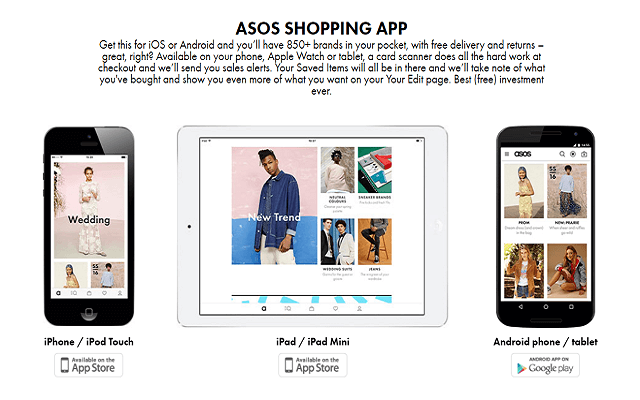
Image Source: Asos.com
‘Click & Collect’ has been essential for grocery stores and alike during the pandemic. Brands like Waitrose have online ordering systems that allow shoppers to buy groceries online and collect from their local Waitrose store.
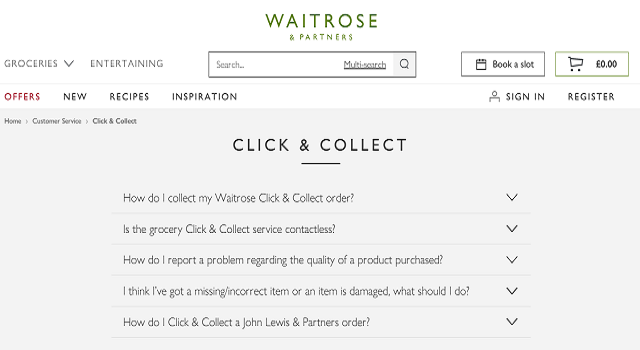
Image Source: Waitrose.com
According to a survey by ParcelHero, 62% of UK stores are now offering free delivery to their customers. Here are a few examples of UK stores that offer free delivery to their customers:
- ASOS – ASOS offers free standard delivery on orders over £35.
- Amazon UK – Amazon UK offers free delivery on eligible orders for Amazon Prime members.
- Marks & Spencer – Marks & Spencer offers free standard delivery on orders over £60.
- Next – Next offers free standard delivery to home, store, and parcel shops on orders over £65.
- John Lewis & Partners – John Lewis & Partners offers free standard delivery on orders over £50.
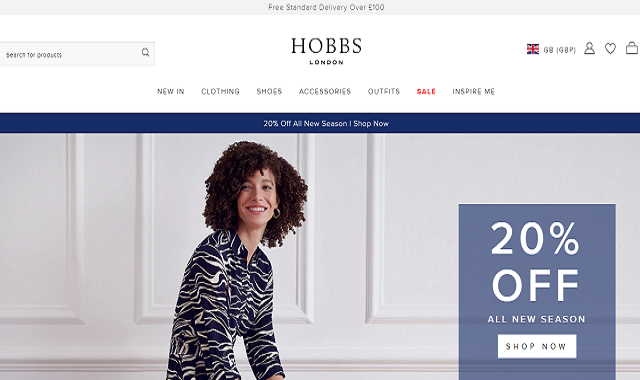
Image Source: hobbs.com/row
Iconic clothing brand Dockers communicates its sustainability initiatives to its audience to bring awareness to the impact fast fashion has on the planet, with water wastage and air pollution. Dockers use sustainably sourced and recycled fibres for clothing and have production techniques that use less water than traditional methods.
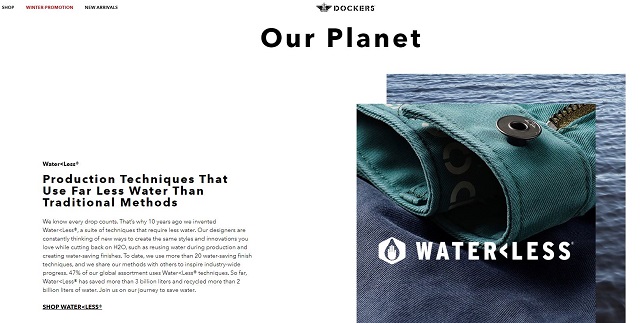
6. Omnichannel Experience: An omnichannel experience is when a brand has multiple customer touchpoints integrated, providing customers with personalised and simplified experiences, whether they’re browsing in-store or from their phones or desktop. Maintaining brand messaging and ease of communication between all touchpoints, including email, website, chatbot, app, social media, phone and in-store, remains crucial in retail and eCommerce today and in the future.
Disney is a great example of an excellent omnichannel experience. While fans are unable to visit the Disneyland locations, Disney ensures an impressive all-encompassing experience online. People can watch shows and movies on all devices, use the interactive Disney+ app, plan holidays with the My Disney Experience tool, and enjoy a myriad of other features that are cohesive and offer a rich customer experience.
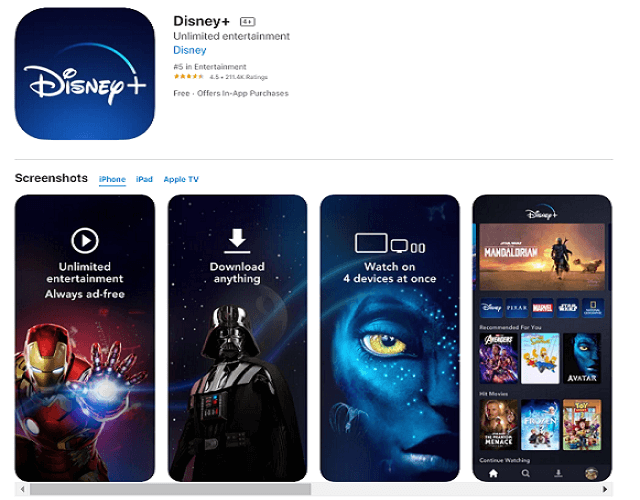
Image Source: Appstore
Fashion brands can leverage automatic product tagging with detailed image tagging that improves simple tags like tops, pants, and shoes by adding colours, materials, styles, fits, sizes, and more.
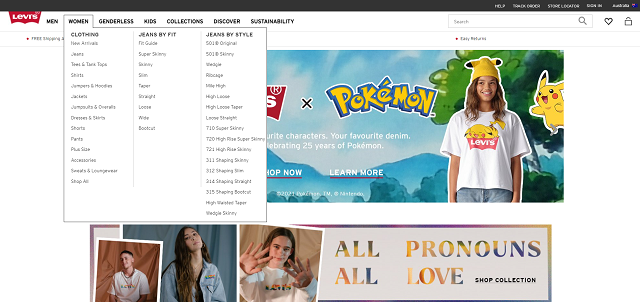
Image Source: Levis.com
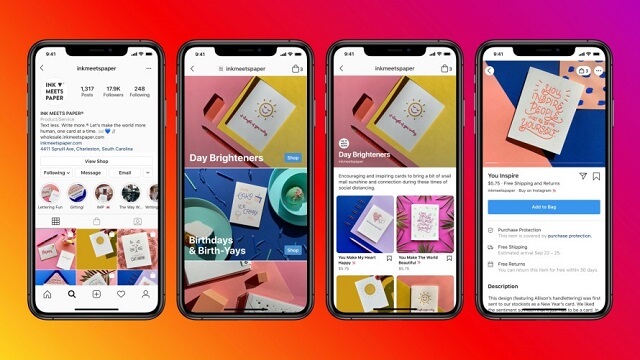
Image Source: Instagram.com
Estee Lauder has implemented live chat services to provide as responsive a service online as what their clientele would experience in-store.

Image Source: esteelauder.com
Google’s new AR makeup try-on feature is a great example of this multi-sensory experience retailers can now provide online. This allows customers to interact with brands by virtually trying on products, such as different shades of lipstick and eyeshadow. This feature also enables users to watch product tutorials and reviews and to purchase the products all in one place. This will be a major competitive advantage in 2023, particularly in the beauty and cosmetic industries.
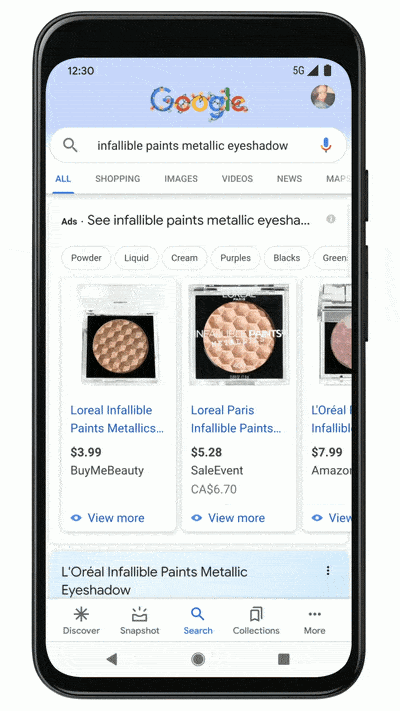
Image Source : blog.google
Going beyond the traditional search box, users can ask queries about what they see. This means customers are going to be able to ask questions about objects on the screen. They can also refine their search based on visual attributes, brands, or colours.
This is designed to make it easier for searchers to find the products they are looking for, whether a stylish summer maxi dress with a leaf print or a beautiful chandelier lighting with a rose gold finish.
This is one of the most significant trends for 2023 because it will change the way you optimise and showcase your products online. While the search function is still in the beta feature, it is the perfect opportunity for you to start refining your strategy so that you are ready for the entire rollout.
The Future of Retail Technology
Future retail technology is automatic, connected, digital, and personal. All brands need to be looking at ways to provide a memorable and engaging experience.
Customers expect to have the same sort of personal and enjoyable shopping experience they encounter in-store. This is one of the most significant customer experience technology trends at present. We have already seen a nod to this with the use of 3D images and “try-on” features, which enable people to see what a watch would look like, on, for example. With a “wrist view,” you can understand the proportions of the watch better and what it would look like while you are wearing it.
Automation also has a massive role to play in the future of retail technology. We’re talking about automation on every level possible, from connected inventory and logistics to customisation and data.
Digitising and automating your processes will enable you to run much more efficiently and grow your retail business to the next level.
What can we expect in the future?
The future of technology in retail is exciting and rapidly evolving, with retail technology trends 2023 giving us a taster of what’s to come. Some of the main things we can expect to see in the future are as follows:
- Artificial intelligence (AI) will continue to be a key technology in retail, with machine learning algorithms becoming more sophisticated and capable of handling more complex tasks, such as personalisation, fraud detection, and supply chain optimisation.
- Virtual and augmented reality (VR/AR) will become more common in retail, providing customers with an immersive and interactive shopping experience. This technology can be used to showcase products, provide virtual try-on experiences, and create virtual showrooms.
- Voice commerce, powered by virtual assistants like Alexa and Google Assistant, will become more prevalent, allowing customers to make purchases using voice commands.
- The Internet of Things (IoT) will continue to transform the retail industry, with connected devices and sensors enabling retailers to track inventory, monitor customer behaviour, and optimise store layouts.
- Sustainability will become an increasingly important focus in the retail industry, with retailers adopting more sustainable practices and promoting eco-friendly products.
- Robotics and automation will become more widespread in retail, with robots being used for tasks such as inventory management, order fulfilment, and customer service.
Overall, the future of technology in retail is exciting and full of potential. Retailers that are able to embrace emerging technologies and adapt to changing consumer preferences and behaviour are likely to thrive in the coming years.
Final Thoughts
The retail technology trends of 2023 highlight the consumers’ desires for a personalised, authentic, convenient and speedy shopping experience. Using data analytics and keeping updated on emerging technology and platforms will ensure your retail brand is drawing in its target audience, keeping the brand afloat and flourishing in 2023 and the digital age. We simply cannot underestimate the importance of digital technology in retail stores.
Subscribe To Us
Contributors
Categories
Subscribe To Us
Contributors
Categories

This website uses cookies so that we can provide you with the best user experience possible. Cookie information is stored in your browser and performs functions such as recognising you when you return to our website and helping our team to understand which sections of the website you find most interesting and useful. Third party cookies such as Google Analytics is also used on this site to provide analytics in order to better understand the user engagement on our site.
You can adjust all of your cookie settings by navigating the tabs on the left hand side.
Strictly Necessary Cookie should be enabled at all times so that we can save your preferences for cookie settings.
If you disable this cookie, we will not be able to save your preferences. This means that every time you visit this website you will need to enable or disable cookies again.





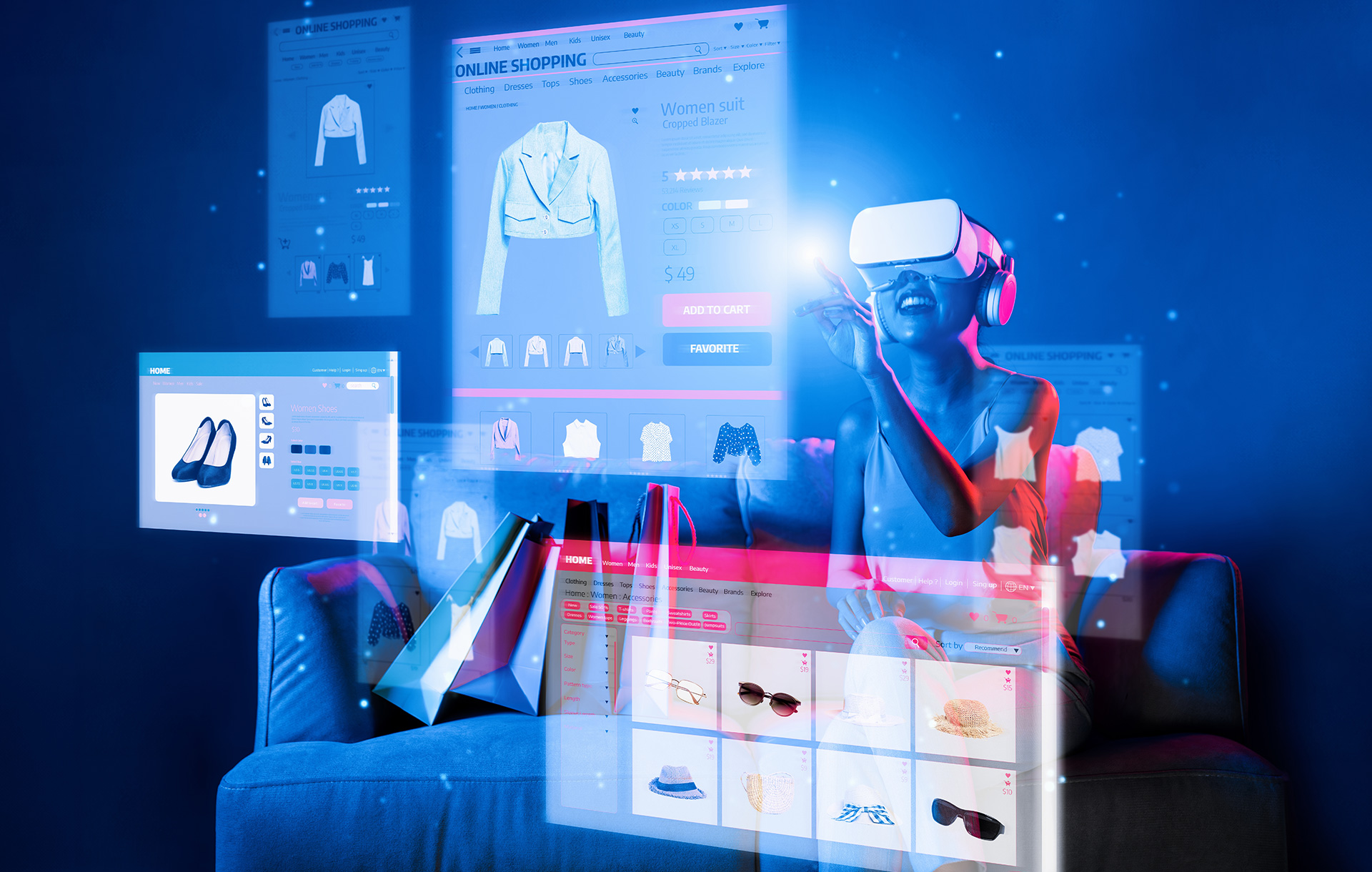
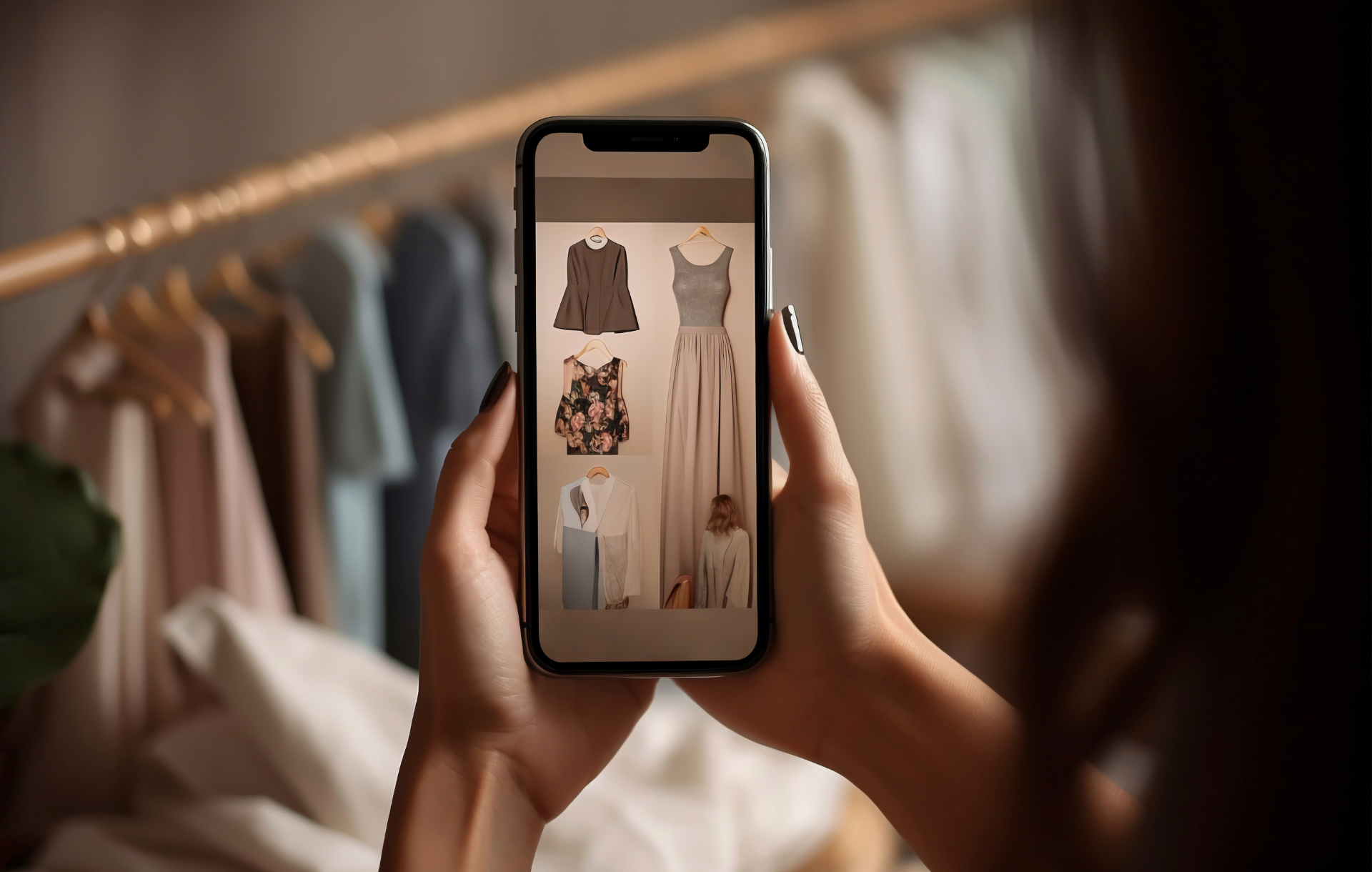
0.Comments